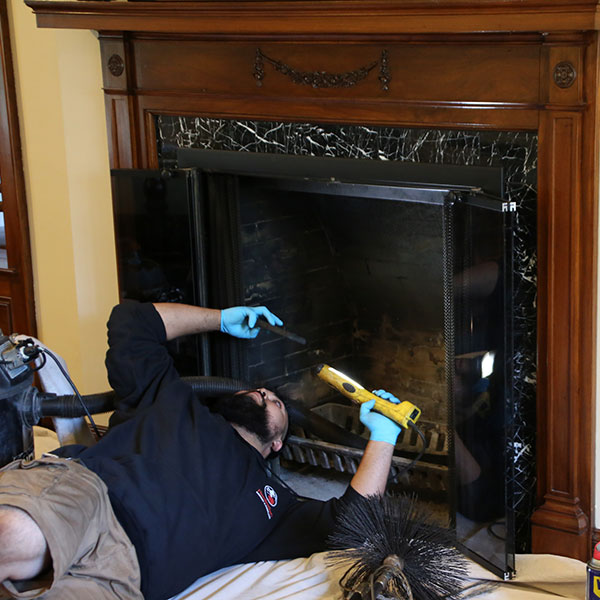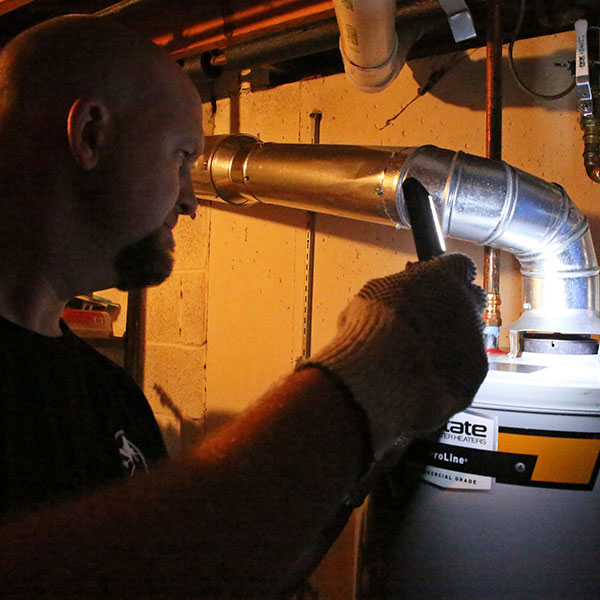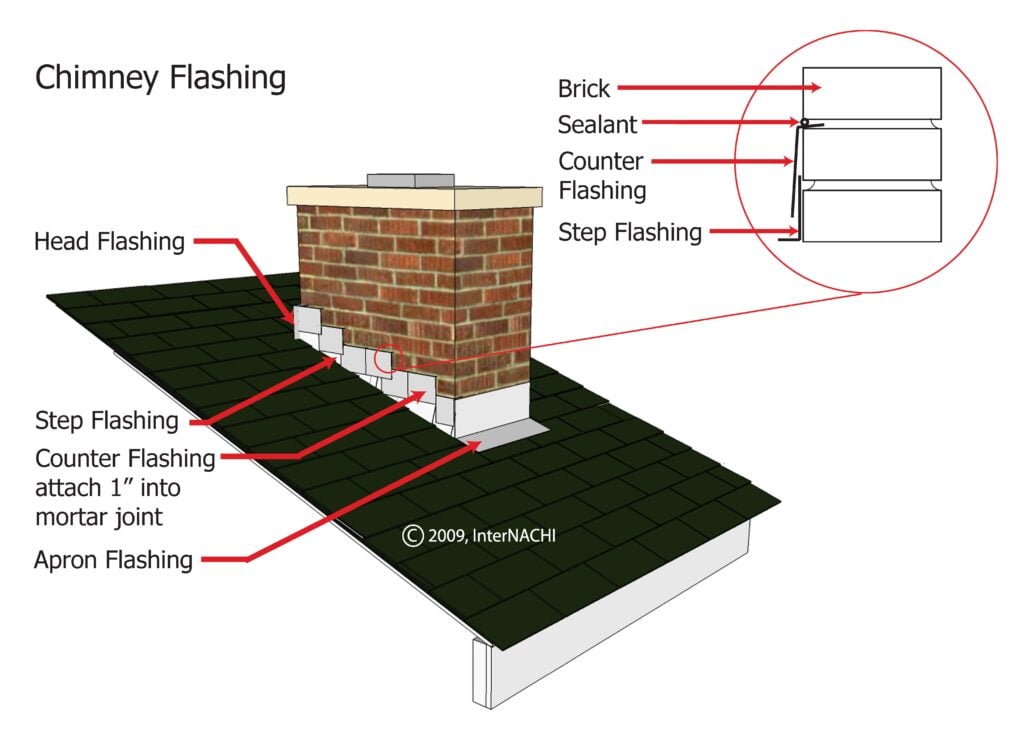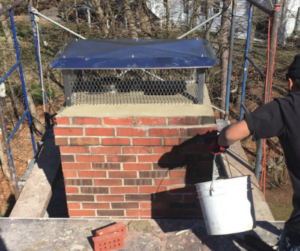Furnaces and boilers, just like fireplaces, need a system for venting. Depending on how these appliances are installed and set up, it may have been logical to use an existing fireplace chimney for venting. This is a good idea: use what’s already there rather than constructing something entirely new.
Problems arise when the homeowner rarely if ever uses the fireplace and assumes that since furnaces and boilers (and some hot water heaters) are “cleaner burning” than the fireplace, the chimney flue isn’t a big concern.
The fact is, it’s a huge concern, especially if the appliance is used frequently and regularly.
 Buildup in the flue
Buildup in the flue
Gas appliances don’t produce smoke-based creosote like wood-burning fireplaces and stoves. But they do produce corrosive substances that can damage the system through which they vent. In the case of a fireplace chimney, this would be the flue liner, which can be made from tile, stainless steel or a poured-in-place compound.
Byproducts of furnace and boiler combustion can eat away at the liner and then begin damaging interior sections of the chimney’s masonry and adjacent materials within the home structure.
Even if you never use your fireplace, the particulate matter produced by your furnace or boiler can eventually build up to the point that drafting is hindered. If you do use your fireplace, the creosote and soot along with the substances produced by the larger gas appliance can cause a dangerous drafting problem.
Carbon monoxide poisoning
Carbon monoxide (CO) is an odorless, invisible gas wood or gas creates when burned. If the chimney flue is clean and open, CO will easily vent through it and exit the top of the chimney.
If drafting is obscured, CO can filter into rooms of the home and put the health of people and pets at risk. It is widely known that inhaling carbon monoxide can result in a host of respiratory problems and in the worst case, death.
Proper maintenance for a multi-use chimney
All chimneys need annual inspections, whether they’re used or not, and whether or not they’re connected to a furnace, boiler or other appliance. Unused chimneys should have their brick and mortar structures looked at regularly to spot signs of damage or decay. Used chimneys need much more thorough inspections.
When you’re adding another venting appliance to your chimney, the Chimney Safety Institute of America (CSIA) recommends a level 2 inspection. This inspection goes further than a basic inspection and involves the use of video imaging technology to see down into the flue.
Annual chimney sweeping is needed for any chimney used by a fireplace and/or other appliance. Certified chimney sweeps have the tools and hands-on experience to safely and properly remove creosote and other deposits from the flue.
 Maintaining a dedicated furnace or boiler vent system
Maintaining a dedicated furnace or boiler vent system
If your furnace or boiler uses its own system for venting, it, too, should be inspected annually. Your inspector will check for drafting issues as well as damage to the venting structure and to the appliance itself. Cleaning should be performed on a schedule suggested by your inspector.
If your fireplace chimney is doing “double-duty,” call the flue venting experts at Fluesbrothers Chimney & Fireplace of Kansas City, KS. We’ll perform a complete inspection and do any necessary cleaning to help you keep your system in tip-top shape all year.
Reach a chimney technician today at
(913) 236-7141.
The post Safety Tips for Using a Masonry Chimney to Vent a Furnace appeared first on Fluesbrothers Chimney Service.


 Northeastern Chimney has been installing and servicing fireplaces for nearly four decades. We provide continuing education for our technicians and provide them with the most up-to-date equipment on the market.
Northeastern Chimney has been installing and servicing fireplaces for nearly four decades. We provide continuing education for our technicians and provide them with the most up-to-date equipment on the market.

 What your chimney damper does
What your chimney damper does
 Buildup in the flue
Buildup in the flue Maintaining a dedicated furnace or boiler vent system
Maintaining a dedicated furnace or boiler vent system
 Is The Chimney Damper Open Or Closed?
Is The Chimney Damper Open Or Closed?
 Birds and squirrels typically choose the open space in your chimney flue to create their nests. They are often drawn to the warmth from your fireplace during the winter months and then continue their stay year-round. Not only is the sound of animals nesting in your chimney unnerving, but nests in your chimney can also cause your chimney to be obstructed. Obstructions can block smoke and gas from exiting your chimney which can cause soot damage and lead to carbon monoxide poisoning. Check out our blog on
Birds and squirrels typically choose the open space in your chimney flue to create their nests. They are often drawn to the warmth from your fireplace during the winter months and then continue their stay year-round. Not only is the sound of animals nesting in your chimney unnerving, but nests in your chimney can also cause your chimney to be obstructed. Obstructions can block smoke and gas from exiting your chimney which can cause soot damage and lead to carbon monoxide poisoning. Check out our blog on